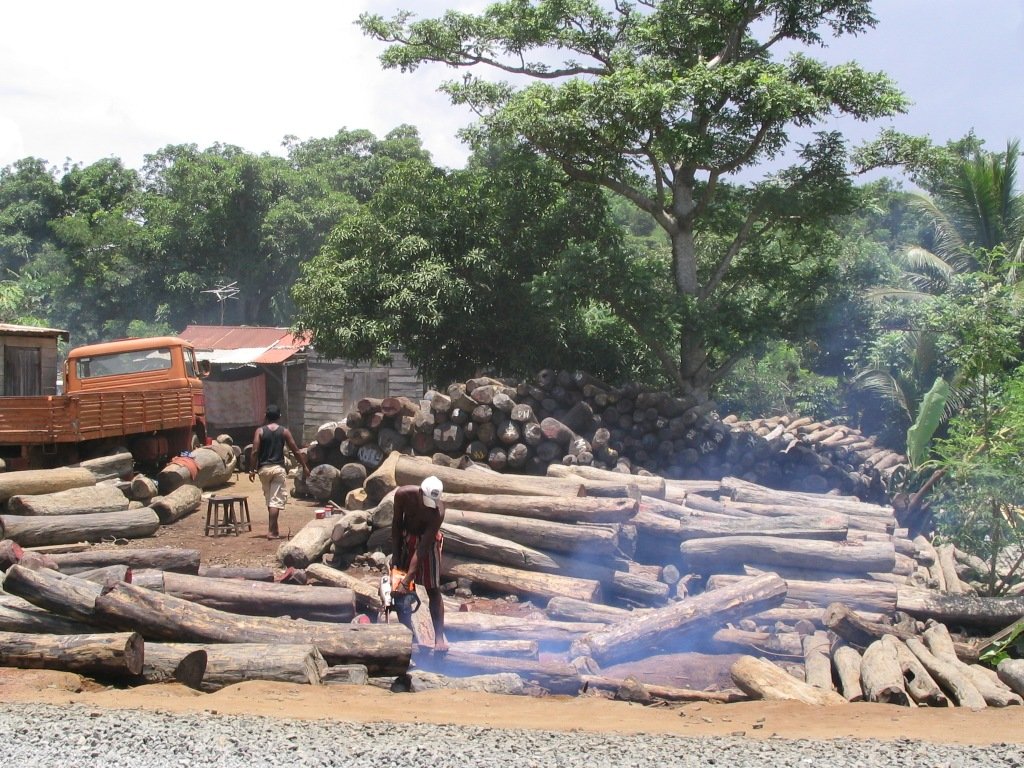The picturesque 320 sq km Tansa Wildlife Sanctuary at Thane (near Mumbai) is being systematically decimated by rampant logging, mining, illegal encroachment and a proposed mega highway project that will cut through this green haven.
The once pristine greens of the 320 sq km Tansa Wildlife Sanctuary at Thane, about 90 kms from Mumbai, are now fighting a grim battle for their very survival.
According to media reports, huge swathes of this ‘protected sanctuary’ forest have either been burnt down or chopped to make way for fields. Trees are being cut and burnt by the dozen and the timber carted away to feed the many logging factories and brick kilns that operate with impunity in the vicinity.
The ear splitting buzz of battery operated chainsaws can be heard for miles, as tempos and even smaller cars are loaded with illegally cut timber in blatant violation of the rules in the face of little or no resistance. The presence of an estimated 60 villages located inside the sanctuary adding to an already worsening situation.
Forest officials like D. B. Shendge, Deputy Conservator of Forests (Wildlife), Thane, are quick to acknowledge the issue stating that day and night patrols have been introduced in the sanctuary to curb this menace. Their efforts have led to the seizure of around 12 vehicles thus far, but sadly that is just the tip of the iceberg.
Clearly it’s an ecological disaster just waiting to happen. The sanctuary which consists of mostly southern tropical moist deciduous forests is also home to a huge variety of rare and endangered species of flora and fauna.
Dominant tree species found here include: Tectona grandis (Teak), Acacia catechu (Khair), Terminalia tomentosa (Ain), Adina cordifolia (Hed), Mitragyna parviflora (Kalamb) and Pterocarpes marsupium (Bibla) among others.
Tansa is also home to an estimated 54 species of animals and 200 species of birds. Forest Owlet – a species which was thought to be extinct for well over a century was rediscovery in November 1997 in a forest reserve at Nandurbar.
The sanctuary also houses Tansa Lake, one of the largest lakes in the state and one of the seven major lakes that supplies approx 445 mn litres of potable water to Mumbaikars daily.
The rampant uprooting of trees and rapidly shrinking forest cover is already casting its shadow on the area’s bio-diversity and its ability to attract rain to its catchment areas. This in turn is expected to have a cascading effect on Mumbai’s long standing efforts to ensure water security for its growing number of residents.
Local residents like Linesh Sule are understandably outraged with the dismal state of affairs.” It’s unfortunate that these people don’t understand how important these forests are for our own survival as a species. The lack of any opposition has only emboldened them to cut more trees.”
“It’s a blatant violation of the Forest Rights Act by outsiders who are enticing tribals living with the sanctuary to resort to illegal activities,” opines Avinash Muzumdar, a frequent visitor to the sanctuary.
“The illicit cutting of wood, encroachments, brick kilns and erosion of the rich top soil is wrecking havoc with the delicate bio-diversity of Tansa. Poachers are also resorting to illegal mining and the use of strong pesticides to clear parts of the forests”, he adds.
Others like environmentalist Meroo Sohrabjee are even more scathing in their indictment. “Tansa is crucial to the water security of Mumbai and the systematic destruction of the sanctuary could wreck havoc with the city’s supply of potable water. It’s time the government awoke from its slumber and realized the gravity of the situation.”
An apt reflection of the government’s apathy to Tansa’s precarious situation is the proposed INR 43,000 cr Mumbai-Nagpur Super Communication Highway, sais to be the state CM Fadnavis’ pet project, which is slated to pass through prime forest land in ten districts – a list that also includes Thane district and the Tansa sanctuary.
According to top officials of the Maharashtra State Road Development Corporation that is building the 706-km highway, the project is expected to occupy about 475 hectares of forest land in the state and will cut through the eco-sensitive zone of the Tansa Sanctuary.
The highway is also slated to be within touching distance of key water reservoirs that supply potable water to cities like Mumbai and Thane. These include Bhatsa (0.68 km), the largest supplier of water of the city, Tansa Lake (7 km), Modak Sagar (9 km) and Vaitarna (13.6 km).
So what then is a viable way out of this seemingly vexed situation? “Urban planners need to be educated on how forests not only provide a home for rare flora and fauna but also hold the key to attract rain – which is the source of all life,” feels RP Deshmukh, senior urban planner (retired). “Unless that is done, the situation will continue to deteriorate.”
“The locals living on the outskirts of the sanctuary need to be provided with an alternate means of livelihood,” feels Sohrabjee. “So that they are not forced to resort to illegal encroachment, overgrazing, forest fires, illicit woodcutting and firewood collection.”
Others like Maharashtra State Wildlife Board member Kishor Rithe opines that it doesn’t make sense to lose forest land in protected areas, even if it entails adding a few more kilometers to the proposed highway.
Regardless of which of these solutions is finally implemented by the government and concerned agencies, the need of the hour is clearly for all the concerned stakeholders to get their act together quickly and save this precious resource before its lost forever.






